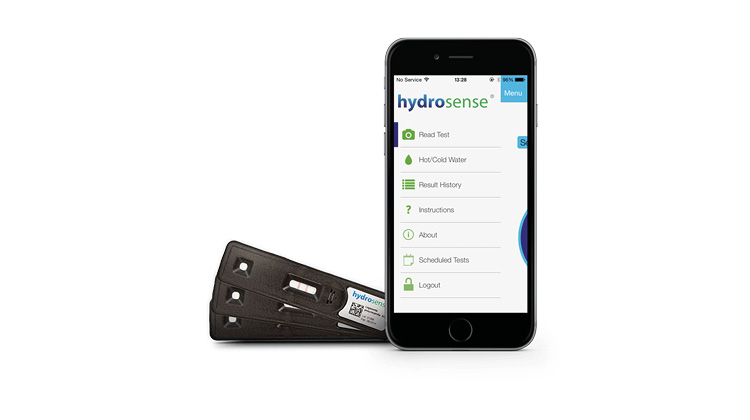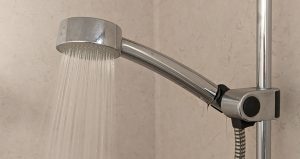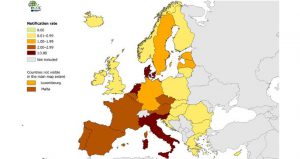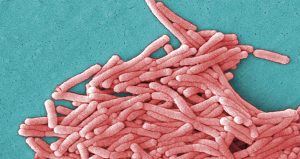Rapid Legionella Testing: Monitor Legionella Against EU Regulations in 25 Minutes

- 13 September 2018
-
Editorial Team
Share article:
– Advertorial –
In recent years cases of Legionnaires’ disease have been on the rise in Europe. Between 2011 and 2015 cases of the infection had risen by 42% and Europe saw the largest number of cases ever reported – with an overall notification rate of 1.37 per 100,000 of the population and a mortality rate of 8.1%. Scientists predict that the effects of climate change could be to blame and that cases of infection will likely continue to rise. But what is so incredibly shocking about this increase is that with a proper water management and regular testing, Legionnaires’ disease could be completely preventable.
To protect public health, Europe has taken a preventive approach against legionella, which aims to identify weak points in hot and cold-water systems where waterborne hazards could enter.
The European Guidelines specifically mention the need for regular monitoring and sampling to check that controls are effective and that weak points in the water system have not been compromised. The document also suggests that a lab culture method for legionella testing should always be used. However, researchers recently found some disturbing limitations with this conventional testing method.
• First of all, it detects only culturable bacteria. Meaning that some viable and dangerous forms of the bacteria cannot be detected using this method. It has been suggested that these forms of the bacteria may be the reason why cooling towers investigated after outbreaks often appear to not be infected.
• It has a low recovery rate. The ISO standard states a recovery rate of >64% for the lab method. Meaning there is a possibility for up to 36% inaccuracy in the results, and likely more than this for non-ISO accredited labs.
• The method is painfully slow and can take 10 to 14 days to return a result. However, populations of legionella can double within a mere 24 hours. Considering that the risk of catching Legionnaires’ disease increases by 64% for every hour spent near a contaminated system, a lead time of 10 to 14 days is clearly insufficient for the protection of public health.
• Samples can get damaged during transport to the lab, typically by excessive heat, radiation or other bacteria in the sample which may dominate.
• The ISO standard specifies acid and heat treatments to kill colonies of bacteria that may dominate the plate and inhibit the growth of any legionella. However, this process may also kill some of the legionella present and lead to false negatives or low CFU counts.
For these reasons, relying solely on lab culture test is simply not good enough and it cannot guarantee the safety of your water systems. Doing so can lead to false negatives, low CFU counts and slow decision making – resulting in fines, illness and even fatalities.
Fortunately, the water market is now undergoing major changes, with a huge variety of innovation, and legionella testing is a key part of that. Innovative testing methods are being developed that enable more flexible, individually tailored treatments and promote better public health outcomes.
Hydrosense is a pioneer in the rapid legionella testing industry. The innovative solution from Hydrosense allows detection of legionella serogroup 1 on-site, in only 25 minutes. This accurate and easy to use test puts a power back in the hands of its users and allows them to make immediate decisions that can save people’s lives. Hydrosense now announced the latest addition to its product portfolio- European Test Kit Range. The technology has been adapted to detect legionella at the concentrations considered dangerous by the EU Guidelines: 1, 000 CFU/L and 10,000 CFU/L*. As a result, water management professionals in the EU can now get a rapid legionella test, that provides an instant call to action, on-site.
The convenience and incredible ease of use of the Hydrosense rapid test makes it the first choice for companies where reputation is crucial; where customer and employee safety are paramount; where clients are vulnerable and where facilities are in remote locations.
More information: Hydrosense
1. International Standards Organization, Water quality — Enumeration of Legionella. (2017). ISO-11731[online] Available at: https://www.iso.org/standard/61782.html [Accessed 22 Jun. 2018].
2. H.Y. Buse and N.J. Ashbolt (2011) Differential growth of Legionella pneumophila strains within a range of amoebae at various temperatures associated with in-premise plumbing. National Exposure Research Laboratory, Office of Research and Development, US Environmental Protection Agency, Cincinnati, OH, USA. Letters in Applied Microbiology 53, 217–224. Available at: https://onlinelibrary.wiley.com/doi/pdf/10.1111/j.1472-765X.2011.03094.x [Accessed 22 Jun. 2018].
3. D.B. Jernigan MD, J. Hofmann MD, M.S. Cetron MD, J.P. Nuorti MD, B.S. Fields PhD, R.F. Benson MS, R.F. Breiman MD, H.B. Lipman PhD, R.J. Carter PhD, C.A. Genese MBA, S.M. Paul MD, P.H. Edelstein MD, I.C. Guerrero MD. (1996) Outbreak of Legionnaires’ disease among cruise ship passengers exposed to a contaminated whirlpool spa. The Lancet Volume 347, Issue 9000, 24 February 1996, Pages 494-499 Available at: https://www.thelancet.com/journals/lancet/article/PIIS0140-6736(96)91137-X/abstract [Accessed 18 Jun. 2018].
4. Lee, J., Lai, S., Exner, M., Lenz, J., Gaia, V., Casati, S., Hartemann, P., Lück, C., Pangon, B., Ricci, M., Scaturro, M., Fontana, S., Sabria, M., Sánchez, I., Assaf, S. and Surman-Lee, S. (2011). An international trial of quantitative PCR for monitoring Legionella in artificial water systems. Journal of Applied Microbiology 110(4), pp.1032-1044. Available at: https://onlinelibrary.wiley.com/doi/full/10.1111/j.1365-2672.2011.04957.x [Accessed 22 Jun. 2018].
5. International Standards Organization, Water quality — Enumeration of Legionella. (2017). ISO-11731[online] Available at: https://www.iso.org/standard/61782.html [Accessed 22 Jun. 2018].













